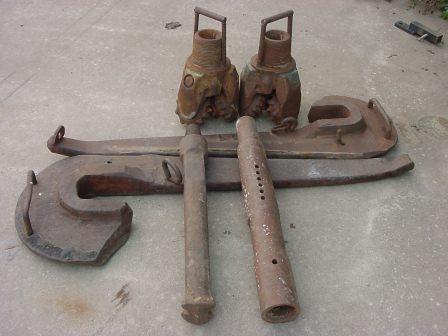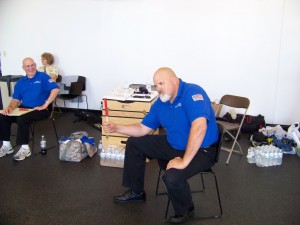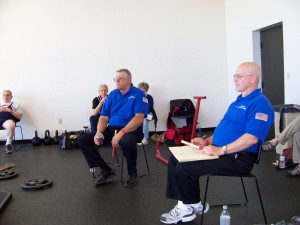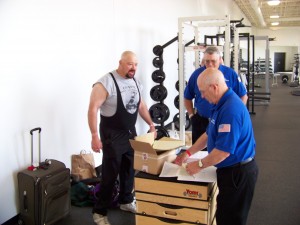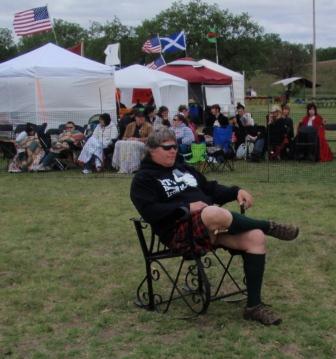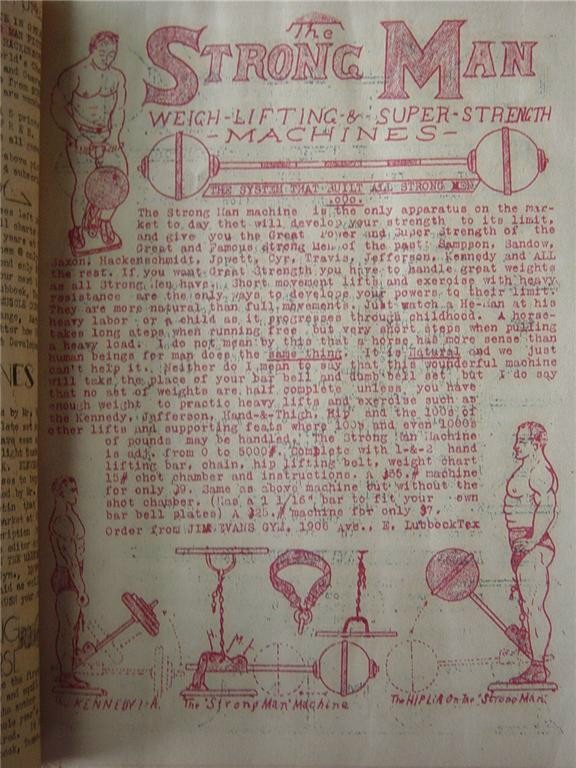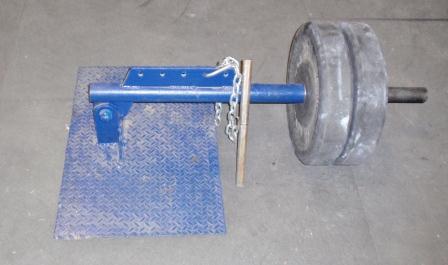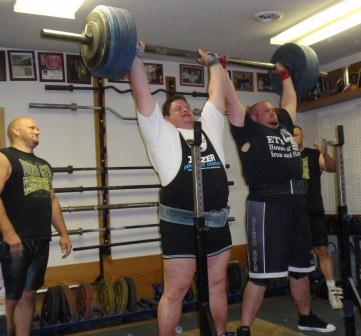BACKYARD LIFTING TOYS
BY DAVE GLASGOW
THANKS TO SOME LESS THAN CONSCIENTIOUS WORKERS WHO PLUGGED TWO OF THE FOUR OIL WELLS ON OUR LAND, I SPENT A GOOD PORTION OF EASTER SUNDAY, CLEANING UP THEIR MESS. THIS INVOLVED LOADING ROTTEN PIPE THAT WAS FULL OF RUST, CRUD AND ALL SORTS OF CORRUPTION THAT I WOULD RATHER NOT THINK ABOUT. IT ALSO MADE FOR A WONDERFUL TIME TRYING TO TORCH THE PIPE AND SUCKER RODS INTO ACCEPTABLE LENGTHS FOR THE TRAILER.
IT WAS WHILE I WAS IN THE MIDDLE OF THIS PROJECT THAT I LOOKED AROUND ME TO SEE THE CORNUCOPIA OF HEAVY OBJECTS THAT WOULD MAKE FOR A GREAT WORKOUT WITHOUT EVER PICKING UP A BARBELL!! NOW, I MUST SAY THAT, HAVING GROWN UP AROUND ALL THIS FODDER, IT DID NOT OCCUR TO ME, UNTIL I WAS WELL OUT OF MY PRIME, THAT THESE ARTICLES COULD AND SHOULD BE USED AS AN ADJUTANT TO A WELL ROUNDED LIFTING REGIME. THERE HAS BEEN A LOT WRITTEN, AS OF LATE, ABOUT HEAVY LIFTING USING TRUCK TIRES, WHEEL BARROWS, RAILROAD TIES, HUGE STONE AS AN ADJUTANT TO BARBELLS. THIS IS NOTHING NEW AND, WHILE NOT EVERYONE HAS ACCESS TO THE OBJECTS THAT, LITERALLY, LITTER OUR FARM, IT WOULD NOT BE HARD FOR EVEN THE MOST CITY BOUND PERSON TO FIND. IT ALSO OCCURRED TO ME THAT A GREAT COMPETITION COULD BE MADE WITH LITTLE TO NO PREPARATION AND OFFER A WELCOME RELIEF TO THE BARBELL “GRIND”. IT WOULD BE ONE OF THOSE THINGS WHERE YOU SHOW UP WITH NO IDEA WHAT WAS GOING TO BE CONTESTED, NO WAY TO PREPARE OTHER THAN BEING “ALL-ROUND” STRONG.
I KNOW I AM NOT THE ONLY ONE WHO HAS THE “CULTURAL ADVANTAGE” OF HOME GROWN LIFTING IMPLEMENTS. WHAT ARE SOME OF YOUR ‘BUILT IN’ DEVICES? IT WOULD BE INTERESTING TO HEAR WHAT THE REST OF YOU HAVE IN YOUR OWN BACKYARD.
HMMMMMM…….. I WONDER WHAT KIND OF LIFTS I CAN COME UP WITH FOR A GOOD WEEKEND COMPETITION………
